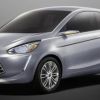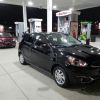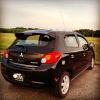
Originally Posted by
MetroMPG

Lacking any special tools (ie. vacuum pump), would you say it might be worth giving a recharge a try?
You may not realize it, but that is a loaded question. Without special tools, I don't recommend it. It could be fully charged and have a worn out compressor. And adding refrigerant would be detrimental. I doubt either of those. Meaning, I doubt it is fully charged, and I sort of doubt it has a worn out compressor.
You're asking if you should throw the dart you have in your hand at a dartboard in a completely dark room, not knowing if there is even a dartboard hanging up anywhere. I had always heard various analogies like that before I knew anything about an A/C system. But after those couple years doing audits, I get it.
Here's what ya do. Bring it down to my house, we'll vacuum and recharge together, and see what it does. Then you'll know:
- that you're recharging it accurately, to perform effectively, and
- that there is no moisture contaminants in your refrigerant, and
- if there is a leak, you'll be able to determine if it is significant or insignificant.
Get someone to push your A/C button. Watch the hub of the compressor. You can see the clutch start and stop even if you can't hear a click. I couldn't hear it on my Lexus, and it has a modded exhaust. But on my truck, the exhaust barks (raRR) when the A/C starts up. The ECU is very aggressive to hold idle rpm. It doesn't speed up the rpm when the AC is on, but the compressor pulls the rpm down just a little when the clutch engages, and the aggression to regain that rpm back causes the exhaust to bark. So it is obvious when it is cycling.
I would recommend buying the tools, but there are also little tricks based on fluid dynamics that you probably wouldn't be considering unless someone showed you. And if you don't know them, you can wind up putting moisture right back in the system. Also, if you do add refrigerant, DON'T add the stop leak type.
Tools I use:
- Manifold gauges, but don't even bother connecting to the high side.
- Vacuum Pump.
- Vent Gauge.
- Various items like a can fitting / piercer. Except now they've gone to resealable cans, so I have procured a new can fitting.
- A digital weight scale maxing out ~1,000 grams, accurate to 0.1 grams.
7milesout
__________________________________________
 View my fuel log 2020 Mirage ES 1.2 manual: 42.4 mpg (US) ... 18.0 km/L ... 5.5 L/100 km ... 51.0 mpg (Imp)
View my fuel log 2020 Mirage ES 1.2 manual: 42.4 mpg (US) ... 18.0 km/L ... 5.5 L/100 km ... 51.0 mpg (Imp)


 Blueberry
Blueberry

 Reply With Quote
Reply With Quote
 "Global Small" Concept
"Global Small" Concept Even Fancier Metro (Mirage #2)
Even Fancier Metro (Mirage #2) Fancy Metro (Mirage #1)
Fancy Metro (Mirage #1) Loaner #1 from Mitsubishi
Loaner #1 from Mitsubishi Loaner #2 from Mitsubishi
Loaner #2 from Mitsubishi Mirage #3: Appliance Car
Mirage #3: Appliance Car
 2017 Mitsubishi Mirage SE
2017 Mitsubishi Mirage SE 2017 Mitsubishi Mirage SE
2017 Mitsubishi Mirage SE
 Basic
Basic
